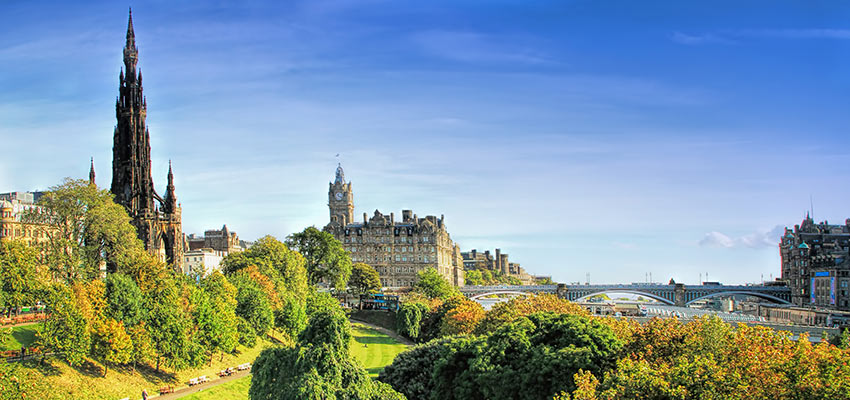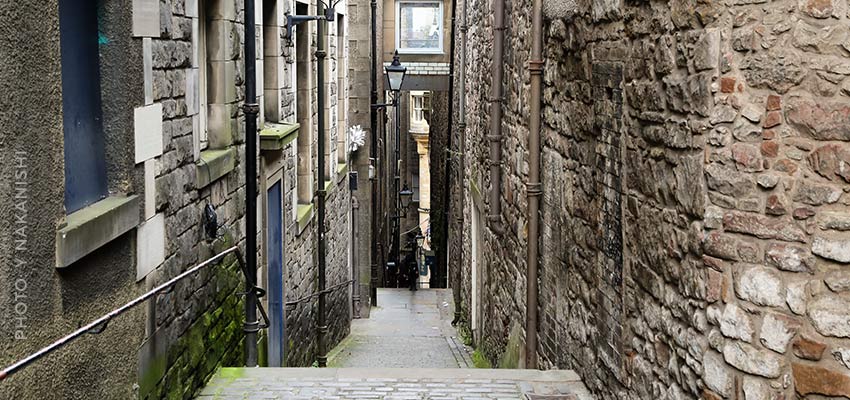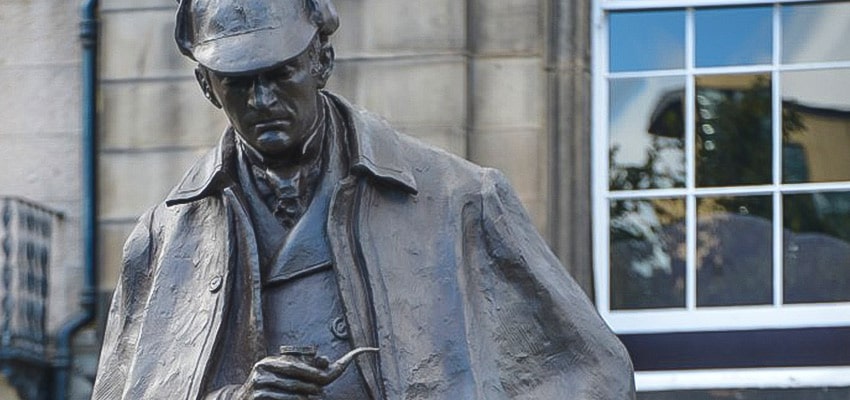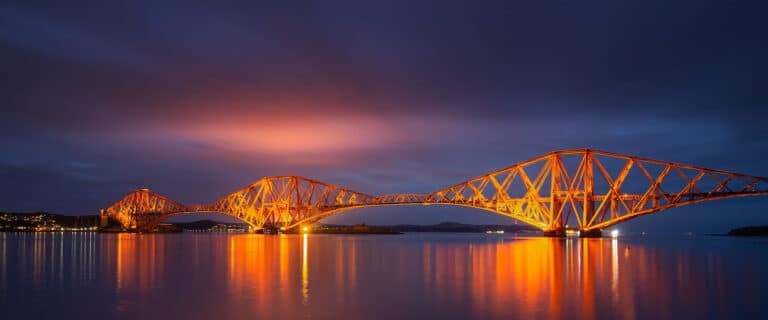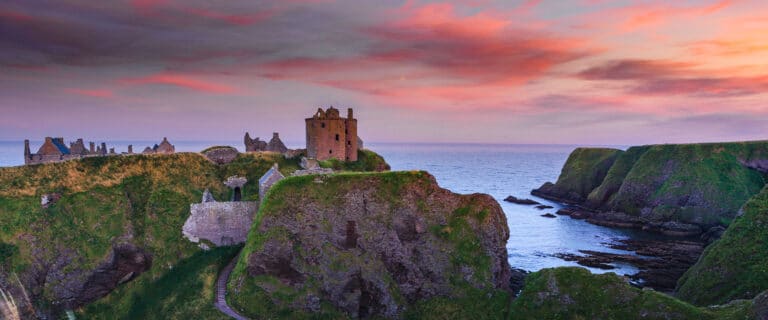Scotland is famed for its rich artistic heritage, and the capital city of Edinburgh is teeming with literary legends. Harry Potter was born here, as were Sherlock Holmes, Peter Pan, Miss Jean Brodie, plus Dr. Jekyll and Mr. Hyde. On your Scotland vacation, the spirit of any one of them may be just around the corner.
JK Rowling and Harry Potter
Edinburgh’s personality was important to JK Rowling as she created the Harry Potter series. She began writing in an Edinburgh café and finished the series in a penthouse suite of the Balmoral Hotel by Waverley Station. The twisting, winding, cobbled environment of Old Town informed much of her work. Greyfriar’s Kirkyard, close to her writing café, is where she found the name “Tom Riddle,” carved on a tombstone, for her antagonist. George Heriot’s School, which resembles Hogwarts, is also in Old Town.
Sir Walter Scott
Poet and novelist Sir Walter Scott, whose works include Lady of the Lake, Ivanhoe, Rob Roy, and Waverley (after which the city’s main train station is named) was born on College Wynd in Old Town, Edinburgh. From his beginnings in a cramped alley, he went on to a grand life. He studied at the Royal High School and in 1801, once he had a family of his own, Scott moved to North Castle Street in the just-developed New Town.
His memory lives on today at the Scott Monument, a magnificent monolith standing over Princes Street. Standing at 200 feet, it’s the tallest monument built for any writer in the world. For the brave, 288 narrow steps lead to viewing platforms.
Robert Burns
When it comes to Scottish poetry, no writer is better known or more well-loved than Robbie Burns. Celebrated by Scots every year on Burns Night, his poetry—sometimes dramatic and sometimes naughty—is read aloud, and he is toasted by revelers with drinks. Burns is commemorated with a life-sized, marble statue. It first stood at Calton Hill, but was moved in 1839. Now you can meet the marble Robbie in the National Portrait Gallery on Queen Street. Originally from Ayrshire, Burns was welcomed with open arms upon his arrival in Edinburgh and became a favorite son. Go to the Writers’ Museum on Lawnmarket, and you’ll have a view of his desk, manuscripts, and personal letters.
Dr. Jekyll and Mr. Hyde
“The Strange Case of Dr. Jekyll and Mr. Hyde” (1886) owes its existence to Edinburgh. The dark, smoky setting, filled with narrow alleyways, is Robert Louis Stevenson’s Edinburgh. The character with two personalities is based on a real villain, Deacon Brodie. He led a double life, and was known to Stevenson’s father. Initially believed to be a solid citizen, people became aware of Brodie’s dark doings—he regularly burgled the very people whose locks he had fitted. He racked up gambling debts and fathered numerous children with different women.
Locals were so shocked by his dual nature that they turned out in droves for Brodie’s public hanging. Stevenson’s fascination with the man led to the creation of Dr. Jekyll and Mr. Hyde. Today, you can explore Stevenson’s works, photos, and personal items in the Writers’ Museum, and you’ll pass by his family home on Heriot Row.
Sherlock Holmes
Sherlock Holmes also owes his existence to an Edinburgh citizen. Arthur Conan Doyle was born on Picardy Place, and he studied at the University of Edinburgh Medical School. There, he became acquainted with Dr. Joseph Bell, a brilliant and idiosyncratic doctor who became the inspiration for the famous Baker Street detective. Sherlock fans can visit the detective’s statue at Picardy Place and book a short course at the Royal Botanical Gardens of Edinburgh, where Conan Doyle once studied botany.
Other Literary Giants
1. Ian Rankin, whose Inspector Rebus novels are set in Edinburgh, was born in Fife. Rankin now lives in the city, and often attends local, literary events.
2. “Trainspotting,” a collection of short stories made into a box office hit, is set in Leith, Edinburgh, and written by local Irvine Welsh. Sprint down Princes Street to recreate the iconic scene from the film version.
3. Ranked by Time magazine as one of the top-100 contemporary English-language novels, “The Prime of Miss Jean Brodie” is written by Muriel Spark. Spark based Brodie on Christina Kay, a woman who taught at Spark’s high school—James Gillespie’s School for Girls. The novel is set in Edinburgh.
4. JM Barrie, the author of Peter Pan, studied at the University of Edinburgh in the late 19th century where he worked as a theatre critic. You might find a performance of Peter Pan at any one of the myriad theatres in the city.
5. Alexander McCall Smith, hailing from the area, is best known for “The No. 1 Ladies’ Detective Agency” series.
Edinburgh is also a city of legendary bookshops, readings, and cafes. Consider stopping at the National Library of Scotland in Old Town. Explore the area that brought the worlds of Harry Potter and Sherlock Holmes to life. Discover the streets and shops that fueled the imaginations of Robert Louis Stevenson and Robbie Burns. Tuck a notebook into your pocket on your Scotland vacation. You may feel like writing your own stories, based on Edinburgh’s magnetic pull.



